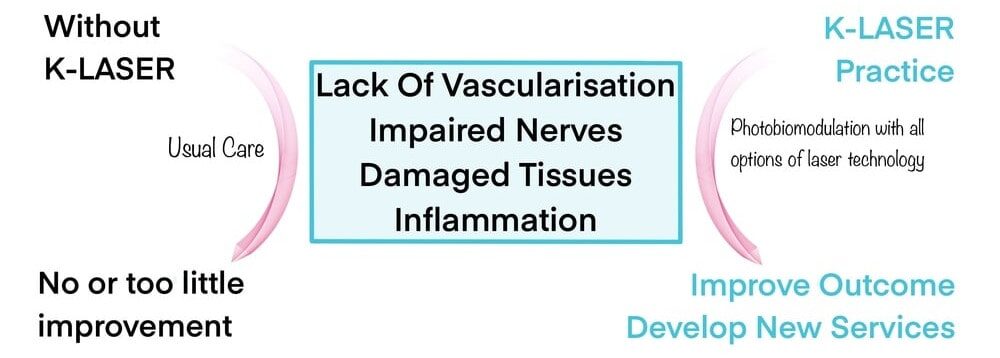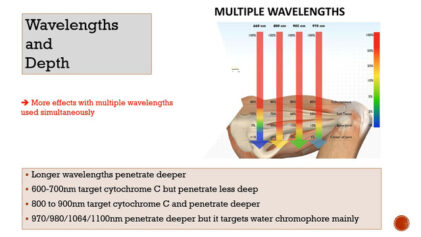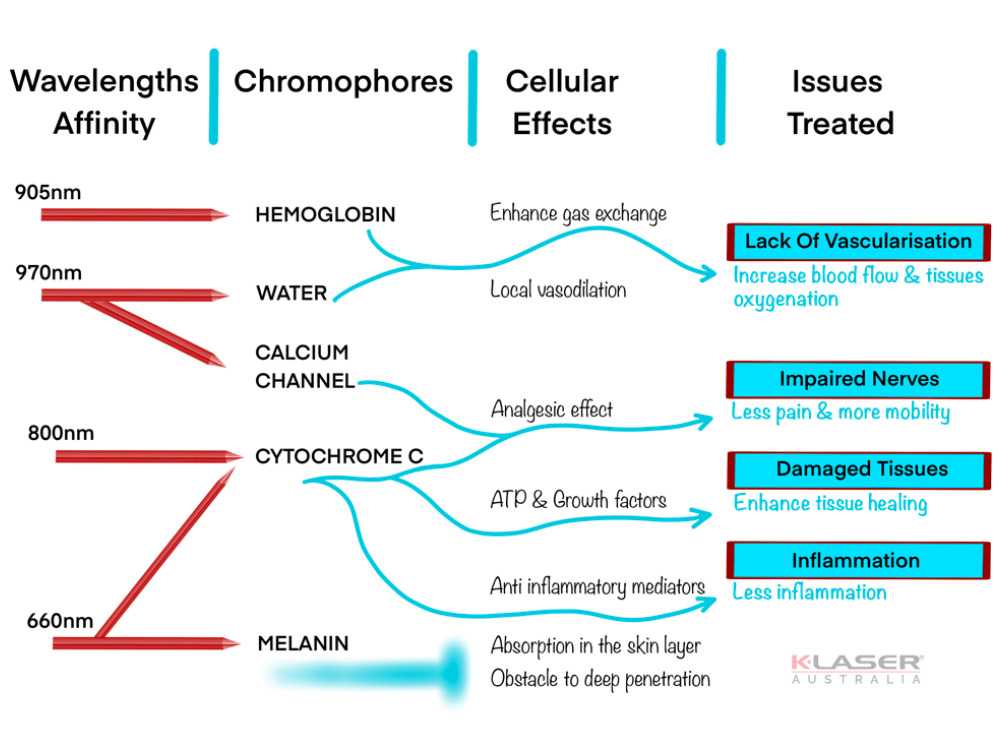LASER THERAPY TO TREAT NEW PATHOLOGIES
In your clinical experience, you may have observed that some patients present with pathologies that are either difficult to treat or show limited response to manual therapy and therapeutic exercises. These unresponsive pathologies often share common underlying issues, including:
- Inflammation
- Damaged tissues
- Lack of vascularisation
- Impaired nerves
Practitioners who incorporate K-Laser therapy into their practice are often able to achieve better outcomes for these challenging pathologies and expand the range of services they offer to their patients. By leveraging the advanced capabilities of K-Laser technology, practitioners can provide a more comprehensive and effective treatment approach for a wide range of conditions.

How Does Class IV Laser Therapy works?
Laser therapy, also known as PhotoBioModulation (PBM), works by triggering various cellular effects through the absorption of photons from the laser beam by specific chromophores in the cells. These cellular effects include:
- Gene transcription: This promotes the production of growth factors and reduces inflammation.
- Increased cellular metabolism: This helps to improve tissue healing.
- Analgesic effect on nerves: This provides pain relief.
- Local vasodilation: This enhances blood flow and helps to drain edema.
Each chromophore has a high affinity for specific wavelengths, which optimizes photon absorption. Additionally, each chromophore acts on different pathways to control inflammation, improve tissue healing, enhance blood flow, and trigger the analgesic effect.
K-Laser devices use four different laser wavelengths (660nm, 800nm, 905nm, and 970nm) simultaneously to ensure that all chromophores are activated, providing complementary therapeutic effects for optimal outcomes.
What kind of response can be expected when using a K-Laser?
K-Laser practitioners have reported exceptional results when using the device to treat pathologies where inflammation is a major factor, even in deep tissues such as arthritis, bursitis, tendinitis, muscle strains, and others. Nerve injuries and neuralgia also demonstrate outstanding outcomes. Moreover, superficial pathologies such as vasculitis, diabetic ulcers, chronic wounds, and hematoma consistently show accelerated healing when treated with K-Laser.
Furthermore, many other pathologies display superior outcomes when the K-Laser is used in conjunction with other treatment modalities. By improving pain levels and blood flow, the K-Laser facilitates an increased range of motion, easier manipulation, and the implementation of therapeutic exercises that would otherwise be too painful.
Click to watch K-laser Treatments
Additional Applications
MEDICAL PRACTITIONER & PODIATRY
Click to watch K-laser Treatments
VETERINARY
Click to watch K-laser Treatments
Contact Us
Discuss Your Needs
Request Demonstration
Consider Your Options
Get A Price



